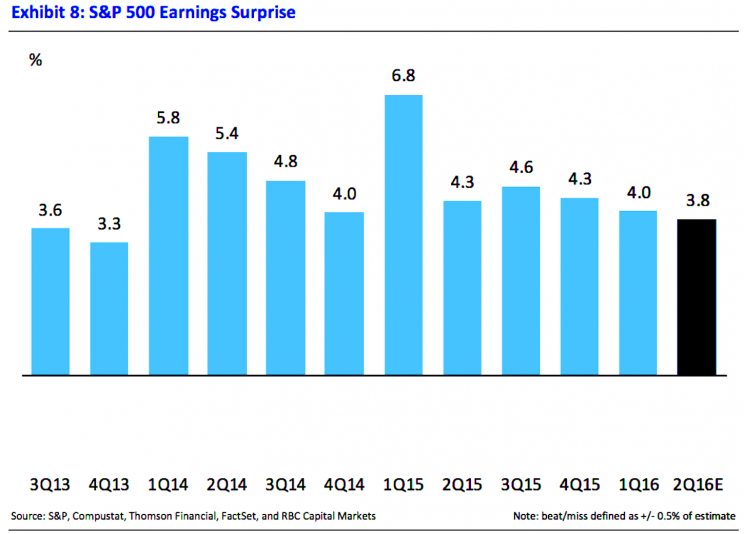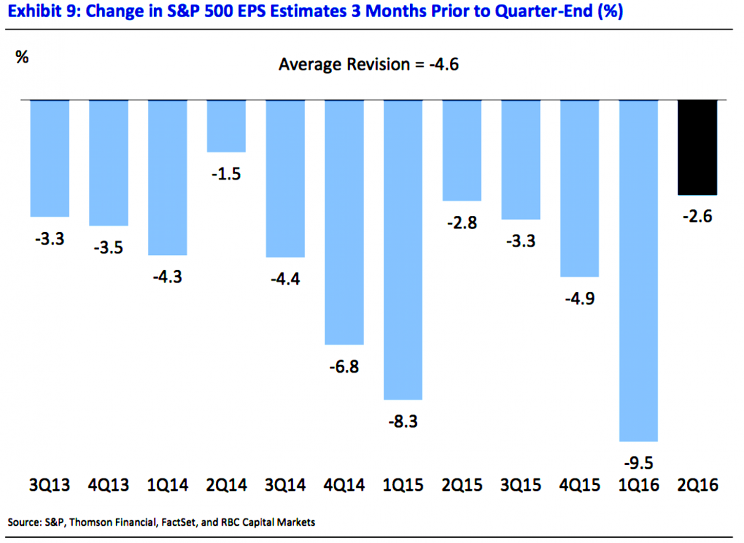Don't be fooled by the S&P 500's peculiar pattern of earnings surprises
Second-quarter earnings season is coming to a close and, for the most part, earnings for S&P 500 (^GSPC) companies during the three months ending in July were better than expected.
“474 companies (96.8% of the S&P 500’s market cap) have reported,” RBC’s Jonathan Golub observed. “Earnings are beating by 3.8% while revenues are surprising by 0.1%.”
In the stock market, the “surprise” represents the difference between expected earnings (as forecast by analysts and guided by managements) and actual earnings (as reported by the companies).

However, “surprise” is a bit of a misnomer. Take a look at the chart of past surprises. Do you see the pattern? That’s right: in at least the past 12 quarters, the average earnings surprise has always been positive. Always.
There are a few theories that attempt to explain this. The shadiest theory suggests managers are using accounting tricks to help bolster the reported bottom line.
The most popular theory is that managements and investor relations reps go to great, yet subtle lengths to lower expectations. This way, companies are less likely to disappoint investors and traders when they reveal actual results. This is evident in the chart below, which shows how earnings estimates were revised ahead of the announcement of actual earnings. As you can see, on average, revisions are negative.

They’re managing expectations. And why wouldn’t they? The last thing they want to do is talk up the company, inflate the stock price, and then actually fall short of expectations, which often ends in tears as stock prices fall and investors lose faith in management.
Okay, so companies beat expectations by an average of 3.8%. Is that something that merits a celebration? Not really.
“2Q16 results point to declines in revenue, earnings, and EPS of -1.0%, -3.9%, and -1.7%, respectively,” Golub observed. That’s right. Everything was actually negative.
All these surprises tell you is that the numbers just weren’t as negative as expected.
–
Sam Ro is managing editor at Yahoo Finance.
Read more:
David Rosenberg nails the stock market in a perfect sentence
The stock market is making no sense for a lot of investors
How a bad story can cripple the economy
The gloomy profits narrative underlying the stock market just got worse
Forecasting 2017 earnings has become Wall Street’s most controversial task

 Yahoo Finance
Yahoo Finance 